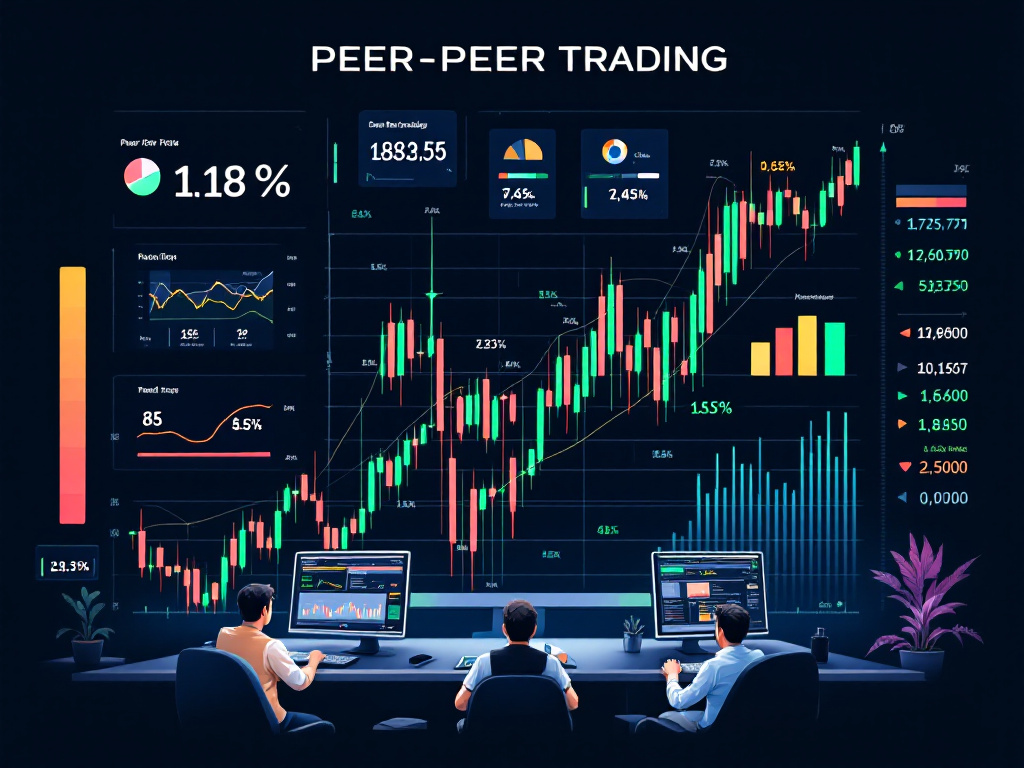Mastering Systematic Trading Models: A Comprehensive Guide
In today’s fast-paced financial arena, systematic trading models have emerged as a reliable method for automating and refining trading strategies. Whether you’re a beginner seeking the best systematic trading models for beginners or a seasoned investor looking for advanced quantitative trading strategies, this guide is tailored to offer insights into algorithmic trading systems, automated trading solutions, and trading model software with backtesting capabilities. As markets become more complex, the reliance on data-driven, systematic approaches has never been more apparent.
Understanding the Landscape of Systematic Trading Models
Systematic trading models leverage mathematical and statistical methods to create algorithms that can execute trades based on predefined criteria. Unlike discretionary trading that depends on human intuition, these models rely largely on quantitative elements which help remove emotional bias. They integrate various facets of algorithmic trading systems, making them integral to modern trading. This post will discuss multiple related topics, from affordable algorithmic trading systems for small investors to cutting-edge automated trading solutions with real-time data analysis.
Systematic trading models are not only designed to enhance the speed and accuracy of trade execution but also to analyze large volumes of market data. Their ability to backtest strategies helps traders understand potential performance before risking actual capital. The integration of quantitative trading strategies and trading model software is a blend of science and art, requiring both precise coding and continuous strategy refinement.
The Benefits of Systematic Trading Models
Automated trading solutions bring several benefits to both novice and professional traders. Some of these advantages include:
- Consistency: Removing human emotion from trading decisions leads to a more disciplined approach and consistency in operations.
- Speed: Algorithmic trading systems can process and execute trades at lightning-fast speeds, an essential advantage in today’s volatile markets.
- Backtesting Benefits: Trading model software with backtesting capabilities allows traders to evaluate strategies against historical data before actual deployment.
- Scalability: Whether it’s top quantitative trading strategies for high-frequency trading or simple rule-based trading, automated systems scale according to market demands.
One of the often undisputed merits of these models is their ability to consistently monitor the markets without fatigue. Especially in high-frequency trading, algorithms operate continuously, scanning for potential opportunities that might be missed by the naked eye.
Implementing Systematic Trading: A Step-by-Step Approach
Building an effective systematic trading strategy involves multiple steps. The first step is to develop a thorough understanding of market mechanics and to define the key input parameters that drive your algorithm. Here, quantitative trading strategies and even the best systematic trading models for beginners start with clear planning and design.
Once a strategy is defined:
- Design and Code: Convert your strategy into a programmable algorithm. Many platforms offer development tools that can integrate automated trading solutions with real-time data analysis tools.
- Backtesting: Use historical market data to test the performance of your model. Trading model software with backtesting capabilities is critical to spot potential flaws and optimize your system.
- Simulation: Run a simulation in a risk-free environment to assess live performance without actual capital at risk.
- Deployment: After ensuring the viability of your model, deploy it in a live trading environment while monitoring its performance closely.
Choosing the right tools and resources is essential. Affordable algorithmic trading systems for small investors are now widely available, empowering even small-scale traders to use advanced systematic trading models that were once reserved for institutional investors.
Figure 1: A conceptual visualization of systematic trading models integrating algorithmic strategies and quantitative analysis.
Real-World Applications and Success Stories
Across financial markets, several success stories underscore the potential of systematic trading models. Case studies reveal that when these models are applied correctly, they can generate consistent returns. High-frequency trading firms often employ top quantitative trading strategies for high-frequency trading, leveraging state-of-the-art technology, and machine learning to beat the market pace.
Investors increasingly rely on automated trading solutions for timely insights. The use of real-time data analysis combined with advanced programming means that even sudden market changes can be swiftly addressed. This capability is a significant benefit for active traders and automated trading system enthusiasts alike.
Challenges and Mitigation Strategies
Despite the numerous benefits, systematic trading models are not without their challenges. One central concern is the risk of over-optimization. When algorithms are too finely tuned to historical data, they may not perform as expected in a live market environment. Regular updates and periodic reviews are essential to ensure long-term success.
Other potential hurdles include:
- Market Volatility: Rapid changes in market conditions can affect algorithmic performance. Continuous monitoring helps mitigate such risks.
- Technical Failures: Software glitches or connectivity issues may halt the system unexpectedly. Establishing backup protocols can safeguard against such events.
- Regulatory Constraints: The evolving regulatory landscape requires regular adjustments to ensure compliance.
Experts recommend a balanced approach where the algorithm is continuously tested against real-world scenarios. Diversifying strategies and integrating risk management frameworks are vital for sustained performance.
Advancements and the Future of Systematic Trading
The future of systematic trading models looks incredibly promising as technology evolves. Machine learning and artificial intelligence are gradually shaping the next generation of algorithmic trading systems. With enhanced computational power, these systems can process larger datasets and respond more dynamically to market changes.
Investors now have access to more affordable algorithmic trading systems for small investors, making it possible to implement strategies that were once the purview of large financial institutions. Furthermore, trading model software is evolving, offering improved backtesting capabilities and more robust simulation platforms.
Organizations are also adopting these innovations to gain a competitive edge. Integrating advanced analytics and deep learning, the algorithms are continually refined for better predictive accuracy. Whether you are interested in automated trading solutions with real-time data analysis or exploring quantitative trading strategies, staying abreast of technology trends is crucial.
Figure 2: The evolving role of systematic trading models in harnessing big data and AI for future market success.
Integrating Systematic Trading Models Into Your Strategy
Transitioning to a systematic trading approach requires both an understanding of technical tools and a strategic mindset. Below are some actionable steps to help you integrate these models into your trading portfolio:
- Education: Start with learning the fundamentals of quantitative trading strategies and the technology behind algorithmic trading systems. There’s a wealth of online resources and courses available.
- Tool Selection: Choose platforms that offer robust features, including automated trading solutions with real-time data analysis and backtesting capabilities. Look for trading model software that matches your investment style.
- Community Engagement: Join trading forums and attend webinars. Networking with experienced traders can offer insights into how they utilize systematic trading models effectively.
- Start Small: Begin with modest investments as you learn the intricacies of the system. Over time, you can scale up as you gain confidence and see positive results.
Moreover, leveraging affordable algorithmic trading systems for small investors can democratize access to high-tech trading resources, allowing a broader audience to participate in automated trading. Whether you’re testing the waters with the best systematic trading models for beginners or advancing your portfolio, a well-planned strategy remains key.
Conclusion
Systematic trading models are revolutionizing the financial trading landscape by combining data analysis, automation, and innovative software. They offer a clear value proposition by improving execution speed, reducing human error, and enabling continuous market monitoring. With the integration of advanced techniques such as quantitative trading strategies and algorithmic trading systems, traders can optimize their processes and remain competitive in ever-changing markets.
Moving forward, embracing these models and continuously refining them in response to market conditions can lead to sustainable success. As the technology behind automated trading solutions evolves, staying informed and adaptive will be crucial for any trader looking to harness the full potential of systematic trading models.
In summary, whether you are a beginner or a veteran in the trading world, the key to success may lie in adopting a systematic approach that marries both art and science. With the right education, tools, and mindset, you can navigate the dynamic waters of today’s financial markets with confidence.
This comprehensive guide is designed to serve as a roadmap helping you understand, implement, and optimize systematic trading models. Dive in, explore the potential of algorithmic trading systems, and unlock the future of automated trading.





